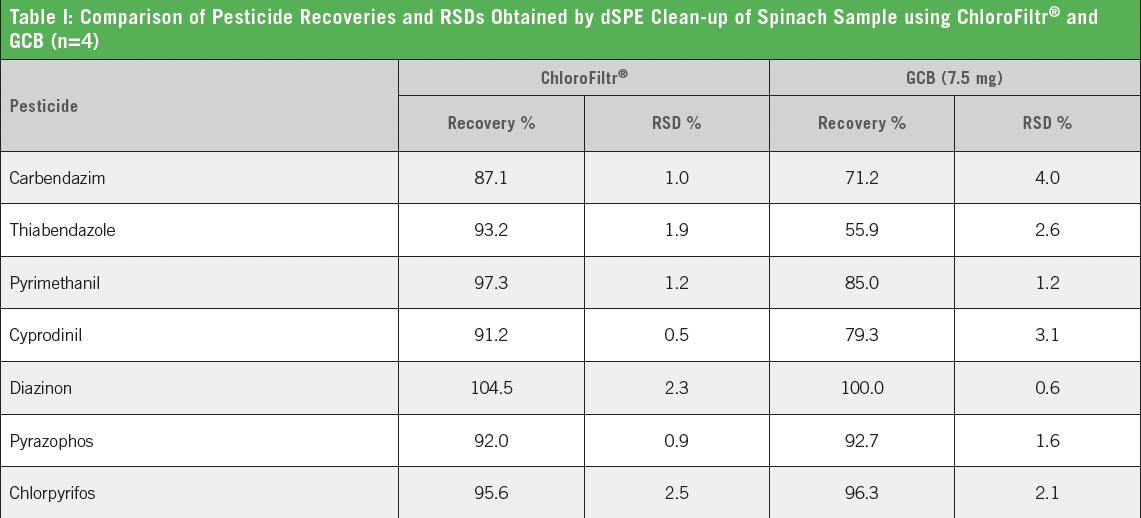ChloroFiltr®: A Novel Sorbent for Chlorophyll Removal Using QuEChERS
Spinach and other highly pigmented vegetables contain chlorophylls, carotenoids, xanthophylls, and anthocyanins. Chlorophylls have the greatest adverse effect on gas chromatography systems due to their non-volatile characteristics. This QuEChERS procedure uses ChloroFiltr to significantly reduce chlorophylls without sacrificing the recoveries of planar pesticides.
Procedure
1. QuEChERS Extraction
a) Homogenize 500 g of spinach in a food processor for 1–2 min
b) Weigh 10 grams of homogenized spinach sample into 50 mL centrifuge tube
c) Spike with 100 μL of 50 ppm triphenyl phosphate* as internal standard (IS)
d) Add 10 mL of acetonitrile then shake for 1 min
e) Add contents of Mylar pouch ECQUUS2-MP then shake vigorously for 1 min
f) Centrifuge at 5,000 rpm for 5 min
g) Supernatant is ready for clean-up
*50 ppm TPP solution: Mix 50 μL of 5000 ppm TPP solution with 4.95 mL of MeCN
2. dSPE Clean-up
a) Transfer 1 mL of the extract to the 2 mL CUMPSGGC182CT (ChloroFiltr)dSPE microcentrifuge tube
b) Shake for 30 s
c) Centrifuge at 3,000 rpm for 5 min
d) Transfer 0.4 mL of the supernatant to a 2 mL autosampler vial
e) Sample is ready for LC–MS/MS analysis

UCT, LLC
2731 Bartram Rd., Bristol, PA 19007
Tel. (800) 385-3153
www.unitedchem.com


Follow the Data to Grow: Why a Scientific Data Platform is Essential
October 28th 2024Innovation is the engine that powers a company’s growth and product development, and for enterprises with R&D laboratories, those lab environments are the greatest source of this innovation. In this white paper, learn how a platform approach to scientific data management, including semantic search, advanced analytics, and lab automation, leads to better enterprise decisions at the executive level, optimized lab performance, more discoveries, and stronger product pipelines.

.png&w=3840&q=75)

.png&w=3840&q=75)



.png&w=3840&q=75)



.png&w=3840&q=75)
